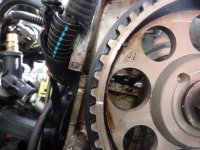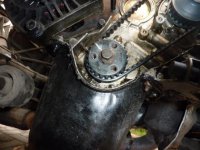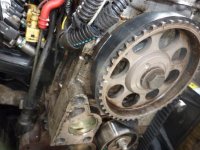been looking at photo again, I've uploaded the photo with red circle around the timing mark, now it does not look that much out and that could be just camera angle
the timing marks are the ones I've used before, changed the twice before last time around 18 months ago, I did the compression tests twice, first time I got on cyl's 1 & 2 only 30 lbs, second time I got 60, 50 lbs, Like I say maybe its me, but I think I've done it right.
in the photo that ziggy has added the lines too, the timing mark on the engine case is just above the black line, with the mark on the cam wheel below the black line, but that could be just angle of camera, photo not square so ziggy's line will not be square






